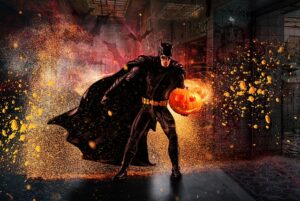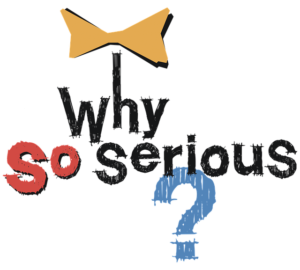Irony is a figure of speech that involves a contradiction or incongruity between what someone said and what someone meant. There are three types of irony: verbal, situational, and dramatic.
This blog post will discuss each type in detail. We will look at examples from literature, film, and everyday life to help you understand the difference between these types of irony.
What is irony, and how is it categorized?
You can categorize irony in a few different ways. One way is to order it according to the tone of voice used by the speaker. For example, when the speaker says one thing but means another. Then there’s a situational irony when something unexpected happens. And finally, dramatic irony, when the audience knows something that the characters in the story don’t know.
The three types of irony
How to identify irony in different contexts
Irony is a literary technique that can be tough to identify.
Here are a few tips:
Verbal irony is when a person says one thing but means another. It’s often marked by sarcasm or dry humour. To detect verbal irony, look for specific giveaways, such as a tone of voice that’s different from the speaker’s usual style or exaggerated body movements.
– For example, listen for sarcasm in the person’s voice. Sarcasm is an irony that uses words to mean the opposite of what they say. So if you hear lots of scorn or bitterness in someone’s voice, they might be using irony sarcastically.
– Or observe how the person moves. Their movements will be exaggerated or over the top. For example, the person might make a big show of walking away from the conversation or might speak in an overly dramatic way.
– And pay attention to the context of the conversation. Writers often use irony to point out something happening in the world. If you’re not sure whether something is ironic or not, ask yourself why the person might have said or done something seemingly contradictory. There’s often a reason behind it.
Situational irony is when a situation turns out differently than expected. To detect situational irony, you must know the characters’ expectations and plot in a story or case.
Dramatic irony occurs when the audience knows something the characters do not know. It usually creates suspense or humour.
Examples of each type of irony

Verbal irony
There are three types of Verbal irony
– Sarcasm: Saying the opposite of what you mean. An example would be repeating what the other person said but adding a negative spin: “So you’re saying I should do all the work, and you can just sit back and relax?”
– Understatement: Saying less than what you mean. For example, when someone says, “It wasn’t that bad” after a horrible event. Or “That was a close one” after you barely escaped being killed.
– Hyperbole: Exaggerating for effect. For example, when someone says, “I could eat a horse!” when they’re not that hungry. Or when someone says, “I couldn’t be more excited” about something, when they mean the opposite.
Situational irony
Situational irony occurs when there is a discrepancy between what you expect to happen and what happens.
There are three types of situational irony
Here are a few situational irony examples:
– One example of situational irony is running late for an important meeting and getting there early.
– Another example is if you won a free trip around the world but do not have any proof.
– Another one is when you’re trying to avoid someone, and they show up everywhere you go.
– A great example of situational irony is the story of Oedipus Rex. Oedipus is a man who goes out of his way to avoid fulfilling a prophecy that he will murder his father and marry his mother, but due to a series of unlucky coincidences, he winds up doing both.
– Another example is the movie The Hangover. In the film, four friends go to a bachelor party in Las Vegas and wake up the next morning without remembering what happened the night before. They eventually discover that they accidentally kidnapped a baby, destroyed a $1 million casino chip, and hired a gangster to kill them.
– An example of situational irony would be if you were to get into a car accident on the way to the hospital to get treatment for a car accident.
– Or imagine a situation where a husband is verbally abusing his wife. His words may be scathing and full of contempt, but his actions toward his wife could be kind and gentle.
Dramatic irony

Here are a few dramatic irony examples. One would be if a character said, “I’m going to get out of this town before something bad happens,” and the audience knows that a natural disaster is about to hit. The character is unaware of the impending danger, but the audience knows what’s coming.
Another example of dramatic irony is when Oedipus Rex blinded himself after realizing he had killed his father and married his mother.
Another example of tragic irony is in Arthur Miller’s play, The Crucible. In the play, Reverend Parris suspects his daughter Abigail of witchcraft but does not have any proof. However, Abigail knows that if she can get John Proctor to confess to being with her, she will be able to save herself, which creates a situation where the audience knows something that the characters do not.
Tips for using irony effectively in your writing
Irony can be a powerful tool for writing effect because it can create a strong emotional reaction in readers. You can use it to show the contrast between what is said and what is meant, or between what is expected and what happens.
Good use of irony can make your writing more memorable and help you to communicate your ideas more effectively. However, it’s essential to use irony with caution, as it can easily be misunderstood or overused. If used correctly, irony can add depth and interest to your writing.
Alternatively, if you wanted to inject some humour into your writing, you could use irony to make light of a situation. For instance, “I’m so happy I got this new job! I’m going to work hard and be the best employee ever!” would be funny because it’s unexpected given the usual negative connotations of employment.
Examples of irony used in literature and everyday life

Different types of irony are often used in literature to create a comic or satiric effect
– For example, in Mark Twain’s novel The Adventures of Huckleberry Finn, the characters use verbal irony and sarcasm to make fun of the hypocritical values of society.
– In everyday life, irony is often used to show that there is more to a situation than meets the eye. For example, when someone says, “I’m not upset,” after getting mad, they are using verbal irony to show that they are upset.
– Or when someone does something bad on purpose but tries to blame it on somebody else, they use ironic humour to get out of trouble.
– The characters in Shakespeare’s play Macbeth are killed by the very thing they desire most – their ambition.
– In Mark Twain’s novel The Adventures of Huckleberry Finn, Huck Finn is forced to help Jim, a runaway slave, escape – even though he knows it’ll mean trouble for him if he gets caught.
– An example of irony in film is The Truman Show. The irony in this movie is that Truman Burbank, the main character, is living his life as an actor in a reality TV show without knowing it. His entire life is being filmed without his knowledge, and everyone around him is part of the show.
– You can find another example of irony in the movie The Princess Bride. In this movie, Westley (the hero) has to overcome many obstacles to save Princess Buttercup from the evil Prince Humperdinck. However, Humperdinck kills Westley and Buttercup thinks he’s dead. The irony here is that Westley only pretended to be dead to save himself and Buttercup.
– Another example of dramatic irony is in the play, Romeo and Juliet. In this play, Romeo Montague falls in love with Juliet Capulet, who is supposed to marry the County Paris. However, Romeo doesn’t know that Juliet is only pretending to be dead to avoid marrying Paris. The audience knows this, but Romeo doesn’t, which creates a sense of dramatic irony.
– One of the most famous examples of irony in a film is the scene in The Dark Knight where the Joker rigs a bomb in a hospital and then tells Batman to save Gotham City. As the Joker predicted, Batman saves more people by evacuating the hospital than he would have if he had let it blow up.
There are countless examples of irony being used in everyday life, but basically, it’s whenever somebody says or does the opposite of what they mean.
Exercises to help you practice using irony in your writing

– Create a situation in which someone has two opposing desires or goals. Have them try to achieve both simultaneously and see what happens.
– Write a story in which a character tries to be helpful but ends up causing more harm than good.
– Think of an ironic twist ending for a short story or novel you’re working on. Write it out and see how it changes the tone of your work.
Conclusion
Irony is a powerful tool for creating memorable and effective writing. By understanding the three types of irony and practicing using them in your writing, you can add more depth and layers to your work.
Be sure to use irony sparingly so that it has the most significant impact, and always make sure your readers are clear on what type of irony you are using. With these tips in mind, go out and start adding some irony to your writing!
If you’re working on your first novel and are looking for more help with your writing, please check out my other articles at https://ullahakanson.com/blog/
Thanks for reading!
Ulla

